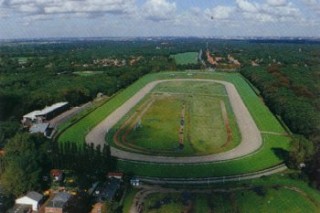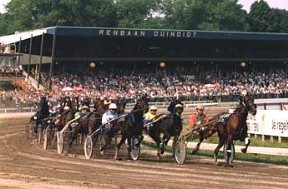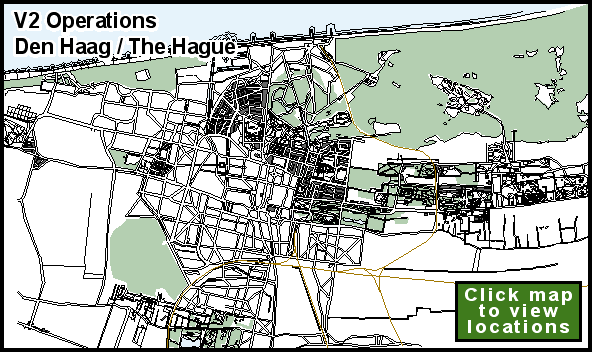| After these
first rocket attacks, English fighter aircraft came to look at Wassenaar.
Soon they discovered the launch site after which, bombardments and strafing
attacks were initiated. A heated battle ensued with German anti-aircraft
batteries. It was not safe anymore in Wassenaar with its beautiful surroundings.
On Sunday, September 10, the government ordered the evacuation of the area,
with the exception of the area behind the Kerkdam. Within three
days, the entire area between the viaduct on the Leidschenstraatweg
and Kerkdam, including the park named Marlot, had to be evacuated.
Even though
the rocket attacks had begun, the concerns of the launching crews were
far from over. Fuel and supplies, especially the highly volatile liquid
oxygen, were being brought in from Germany in frustratingly small amounts.
The rockets were another problem. By the time they reached their launching
sites, more than half were not fit for firing. Long storage was causing
the inner workings of many rockets to corrode. From the time the rockets
left the Central Works factory at Nordhausen, they were stockpiled in depots
along the northwest German border. There they remained, for weeks at a
time. When they were finally brought over to the launching crews many of
the V2s were in poor condition. Vital components had corroded away and
electrical systems were especially vulnerable.
The Dutch resistance
on several occasions was able to get maps and messages to the British detailing
the locations and operations of the German rocket troops. Several British
and American fighter-bomber attacks were mounted with little success during
the German rocket campaign. It took Intelligence quite a while before they
found out how mobile the new rockets were. Not only was the rocket impossible
to stop after firing, but was also going to be a major headache to stop
on the ground. Both the R.A.F. and the U.S. Army Air Force did their best
to stop the missiles. The U.S. Eighth Air Force sent more than 100 fighters
over Holland to strafe anything that looked like a target. The fighter
sweep shot up a lot of vehicles and railway cars, and probably was partly
responsible for the shortage of liquid oxygen and other supplies at the
launch sites.
The Allied
armies were another major worry. American, British, and Canadian troops
were already into Belgium and at the German border. Each batterie commander
was advised to be ready to move out of their areas within a few hours notice.
SS
General Hans Kammler, commander of all the rocket units, did not want
the rockets to fall into Allied hands. The 485 (Motorized) Artillery
Battalion's launching crews waited to see what would happen next. Their
orders were to continue firing at London, but the 485 was on alert
for a possible withdrawal to the east.
On September
9, the Batt. 2./485 moved launching operations to the estate Beukenhorst
in Wassenaar. On September 10, the first batterie of the 485 Batt.
joins the other units in Wassenaar for operations. On September 12, between
(06.00 hr.) and (21.40 hr.), five V2s were launched. On September 14, two
rockets crashed into the North Sea, north of Kijkduin. On Sunday,
September 17, about (19.30 hr.), the R.A.F. bombed the surrounding of Raaphorst.
They did it thoroughly because in the coming days there were no V2s launched.
On September 19, the inhabitants were allowed to return to their houses
once again. Several hours after the air attack the rocket troops were forced
to leave temporarily because of Operation Market Garden in Arnhem. They
left Wassenaar in the night towards the North. They went to Overveen near
Haarlem.
On October
3, the Sonderkommando had returned to Den Haag and the first Meillerwagen
drove onto Ockenburg in the morning at (09.00 hr.). The Allies'
defeat during the Market Garden Operation gave the German rocket troops
confidence that the sites in The Hague were secure. The first V2 that day
was launched at 23.00 hr., followed by another rocket 45 minutes later.
The later rocket exploded at a low height. First rocket from new launch
site at Bloemendaal was launched on October 7. An air attack took
place at Ockenburg and Bloemendaal on October 18, when six
aircraft dropped their bomb loads. At Bloemendaal the bombs caught
a rocket on a Meillerwagen unconcealed, out in the open.
On October
21, Batt. 444, after firing from Walcheren, then from Gaasterland,
moved to join 485 Batt. units for operations in Den Haag. The launch
site at the estate Duindigt was used again on October 22. During the first
three weeks of October, usually one or two rockets were launched per day.
But now, with the 444 from Gaasterland also firing from Den Haag,
no less than six rockets were launched each day. On October 23 there were
launch sites at Rijswijkse Bos (de Naald), several meters away from
the Monument to Peace of 1697. The ammunition dump at Overvoorde
was too close to these launching sites at Rijswijk, so the sites
were abandoned on October 27. The area around the race course at Duindigt,
where the ground was very solid, was used frequently. At this time, two
launch sites were located here. Also in the north, some rockets were launched
from the Kerkhoflaan in the Scheveningsche Bosjes, on Zorgvliet
and later Willem de Zwijgerlaan / Statenkwartier.
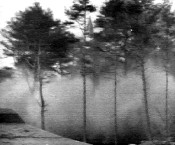 From
their homes in Den Haag, residents saw quite a few V2s blast skyward. Watching
the tall missiles roar off their firing tables was an awe-inspiring experience
for onlookers. But to the launching unit technicians and engineers, preparing
a V2 for firing meant hard work and tense nerves. The V2 was such a sophisticated
weapon that even the smallest error might cause it to malfunction and crash,
or blow up on the ground. Many of the firings took place in the many restricted
areas called “The Sperrgebiet”. One of these was a three-kilometer
strip of land along the coast where all residents had were forced to exit
earlier because of construction undertaken for Hitler's Atlantik
Wall. From
their homes in Den Haag, residents saw quite a few V2s blast skyward. Watching
the tall missiles roar off their firing tables was an awe-inspiring experience
for onlookers. But to the launching unit technicians and engineers, preparing
a V2 for firing meant hard work and tense nerves. The V2 was such a sophisticated
weapon that even the smallest error might cause it to malfunction and crash,
or blow up on the ground. Many of the firings took place in the many restricted
areas called “The Sperrgebiet”. One of these was a three-kilometer
strip of land along the coast where all residents had were forced to exit
earlier because of construction undertaken for Hitler's Atlantik
Wall.
Security measures
along this strip were strict. The Germans wanted no persons to see how
their rockets were prepared and launched, but civilians still managed to
get close enough for a good look. Some young children were free to go in
and out of the restricted area. They would gather firewood for their families,
and could go into the Sperrgebiet without being bothered. Once inside
the restricted zone, however, some children became acquainted with some
of the German soldiers. They would strike up conversations with the uniformed
men and found out good information. Some of these children even saw a dangerous
V2 launch -up close at times.
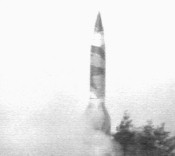 A
tree-lined street, such as the Rijksstraatweg / Benoordenhoutseweg,
which runs north from Den Haag through Wassenaar, was the ideal launching
site. It was firm and level, accessible to all launch vehicles, and the
tall trees provided natural camouflage for the 46-foot high rockets. The
Haagse
Bos, a forested park inside Den Haag, was another launching
ground. V2s were also launched from the streets - Willem de Zwijgerlaan,
Zorgvliet,
Kerkhoflaan,
and Waalsdorperweg. All traffic would be cleared from the selected
roadway just before launch. After the firing, the crews would quickly leave
the area. If any Allied fighters arrived, they found nothing at all. A
tree-lined street, such as the Rijksstraatweg / Benoordenhoutseweg,
which runs north from Den Haag through Wassenaar, was the ideal launching
site. It was firm and level, accessible to all launch vehicles, and the
tall trees provided natural camouflage for the 46-foot high rockets. The
Haagse
Bos, a forested park inside Den Haag, was another launching
ground. V2s were also launched from the streets - Willem de Zwijgerlaan,
Zorgvliet,
Kerkhoflaan,
and Waalsdorperweg. All traffic would be cleared from the selected
roadway just before launch. After the firing, the crews would quickly leave
the area. If any Allied fighters arrived, they found nothing at all.
After the failure
of Operation Market Garden by Allied troops, air strikes were the only
way of stopping, or at least slowing down the rocket attack. But even though
American an British fighters where constantly harassing the Dutch road
and rail system, the missile launchings kept increasing.
But for most,
the abruptness of the V2s arrival was its most terrifying feature. There
was no time to do anything. It traveled faster than sound and it was upon
a person before they could even think about it. Londoners reported that
without question, the V2s were worse than the V1 attacks. The thunderous
bang of the explosion, followed by the roar of the rockets descent, which
made it seem bigger and more frightening.
The rocket
launching units continued their operations, moving to a new site every
few days. On October 26, nine rockets were fired, three of them in the
space of twenty-five minutes. The next day there were two launch failures
near Beukenhorst; one crashed into area of De Kruisvaarder;
another crashed into the opposite end of Beukenhorst. The next day
was even worse for the Sonderkommando troops at Beukenhorst – at
(14.00 hr.) a rocket failure occurred at a height of 90 meters. The rocket
fell back onto the launch site destroying equipment and killing twelve
German soldiers. This would be the worst accident (pertaining to German
losses) during the Den Haag operations. Afterwards, the Beukenhorst
launch site was no longer used.
A rocket launched
from the Rijswijkse Bos exploded at Huis van de Kruisvaarders
/ van St. Jan and killed seven boys, five brothers and two others in
the afternoon. In the following months there were a lot of failures. In
Rijswijk
a rocket came down on the Roman Catholic Institute killing almost 20 people.
In Voorburg at Koning Wilhelminastraat six houses were destroyed
and even a rocket came down on the railway station in Wassenaar.
Even though
the missiles were now fresh from the Central Works factory, launching failures
continued. Dutch intelligence put the failure rate for launchings at 8%.
During October, 83 rockets were launched of which 5 were failures. Some
rockets blew up on their launch stands, killing and injuring crew members;
some failed to ignite at all. Others hung in the air for a moment, then
crashed to earth and blew up or fell into the sea. Whenever civilians heard
the roar of a rocket ignition, everyone would begin to count the seconds.
After thirty seconds, they were safe; if the engine stopped after thirty
seconds or more had gone by, the rocket would either crash into the North
Sea or fall on the other side of the city.
When the engine
cut out before the thirty second limit, that was the worst time. The missile
would slow down and hang in the air for a few seconds before it began to
fall back to earth. Rockets were seen blasting wildly over the city, out
of control; shooting horizontally only to crash a few kilometers from the
firing site. Most exploded on impact; if the warhead did not go off, German
specialists would try to defuse it. Many of the failed shots fell on the
residents of the city. The detonation of the 2000 LB (1000 kg) warhead,
along with the alcohol and liquid oxygen supply, blew up hundreds of houses
and caused many civilian casualties.
The ‘air burst’
problem had not been completely solved either. Rockets frequently broke
up in the upper atmosphere, high above the North Sea. On November 12, a
rocket broke up in the air over London's Victoria Station. Astonished people
saw a puff of smoke bloom in the sky, followed a few seconds later by a
distant explosion and a hail of metal fragments.
During the
first week of November, twelve V2s hit London; during the second week,
35 V2s came down; during the third week, there were 27 V2 incidents. When
the first few rockets landed on England in September, they had been little
more than a nuisance. But in November, several were hitting every day.
On November 12-14, there were about four V2 incidents per day. Under a
new system called warme Semmel or 'hot cakes', rockets no longer
sat about for weeks before launching. By November 20, about 210 rockets
had reached England, with 95 hitting London. Four hundred and fifty-six
people had been killed in London alone, with hundreds more injured.
Besides causing
actual physical damage, the rockets also had a psychological impact. The
V2 affliction on London was much more supernatural than the buzz bombs
had been earlier in the year. No one could have expected the ‘lightning
bolt out of nowhere’. Even though the V2 was generally more feared, it
disrupted everyday life less than the V1 flying bomb; because there was
no way to prepare for it. One moment you were there and the next moment
you were vanished. The V2 impacted at a speed that would bury the missile
30 feet into the earth before the warhead could explode. The blast wave,
combined with the speed of impact, would devastate everything within a
quarter mile radius.
Since November
9, the Wehrmacht no longer occupied Walcheren. After a sharp nine day battle,
the German commander surrendered Walcheren and 10000 German troops to British
and Canadian forces. The way to the port of Antwerp was now clear; Allied
forces controlled all fifty-four miles of the port’s seaward approaches.
But the rocket launchings went on from The Hague and its outskirts. On
a clear day in the northern portions of the Antwerp suburbs, soldiers and
civilians could see the rockets heading for London in the distance launched
from the Dutch coast.
Although the
launching batteries in and around Den Haag hit London eighty-two times
in November, the crews of 444 and 485 had no real idea where
their missiles were impacting. They could only set their gyro mechanisms
and hope they were accurate. Several unsuccessful attempts were made to
pinpoint the V2 impacts by using radio waves and seismology, but in the
end the best reports came from German spies.
Various V2
firing sites now included places such as the road to Waalsdorp across
the railway line. The assembly and transfer point for the A4 technical
& firing troops was located at Villa “Bella Vista” on Scheveningen
Promenade and the “CAP” garage. As many as 14 Meillerwagen trailers
were seen. There was also a firing site at Zorgvliet at the intersection
of Jacob Catslaan / Johan de Wittlaan.
A new launching
site at Ockenburg, was reportedly located in the surroundings of
the summerhouses, from Monsterscheweg and from grounds close to
the clinic. German Staff Headquarters were seen at van Stolkweg
and in this area there was a launching site near the Waterpartij.
Further south, there was a 444 batterie firing site in Hoek van
Holland on a new concrete road (a few hundred meters east of the station),
opposite the car ferry that sailed between Hoek van Holland and
Rozenburg.
There was also another HvH 444 firing site nearby, next to the sanitorium,
on the road to Den Haag.
One site was rumored to be a static
bunker at the Hoek van Holland "fruit wharf", where perfect
little squares were seen burnt into the new concrete road where the launching
tables were standing next to the railway. The site was just opposite from
the new ferry landing for vehicles to Rozenburg, a little southeast of
the rail station. This firing position was used first by Batt. 444 and
later by 1./485.
Britain's Air
Ministry decided that bombing liquid oxygen factories might succeed where
other attempts to stop the long-range missiles had failed. Experts drew
up a list of eighteen factories that manufactured liquid oxygen. Ten factories
were inside Germany; eight were in the Netherlands.
Some suppliers
in Holland were - the company, “NV Centrale Ammoniak Fabriek” at the Stammersdijk
23 at Weesperkarspel, delivered liquid oxygen exclusively for
the German troops. Another company in Amsterdam, “NV Maatschappij tot explotatie
der cg Remmenhullersche Koolzuur en Zuurstoffabriek” Kerkstraat
271, also delivered liquid oxygen. The companies, “Gist en Spiritus fabriek”
and “De Destilleerderij en Roomgist fabriek” Turfmarkt 17, at Delft,
delivered spiritus (alcohol).
The eight plants
in Holland, considered to be the most important, and had been built in
residential areas. Attacking these factories would require pinpoint accuracy;
even the slightest bombing error might result in hundreds of civilian deaths.
Because of an agreement with the Dutch government in London regarding such
targets in residential districts, only one of the liquid oxygen factories
in Holland, Zuurstof fabriek De Alblas, was bombed. On Jaunuary
22, in the mid-morning the plant was attacked by seven Spitfires, then
again, around 13.00 hr. and the plant was destroyed. Only two of the German
plants were attacked; this had no effect upon the supply of liquid oxygen
to the rocket launching crews.
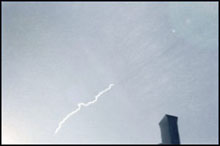 Allied
air power also stepped up armed reconnaissance flights over Den Haag. Hundreds
of sorties were flown looking for V-weapon targets. Sometimes contacts
from the Dutch underground tipped off the always close fighter bombers.
Between October and November, the U.S. Army Air Force and Fighter Command
flew more than ten thousand sorties against railways and road transportations,
between Den Haag and Leiden, and around the Hoek van Holland.
Fighter Command flew 600 more from British airfields, much of the work
done by the Spitfire, employed as a fighter-bomber. Allied fighters caught
two trains just from the Central Works factory at the end of November.
The trains carried 40 missiles between them - all 40 rockets were scrapped. Allied
air power also stepped up armed reconnaissance flights over Den Haag. Hundreds
of sorties were flown looking for V-weapon targets. Sometimes contacts
from the Dutch underground tipped off the always close fighter bombers.
Between October and November, the U.S. Army Air Force and Fighter Command
flew more than ten thousand sorties against railways and road transportations,
between Den Haag and Leiden, and around the Hoek van Holland.
Fighter Command flew 600 more from British airfields, much of the work
done by the Spitfire, employed as a fighter-bomber. Allied fighters caught
two trains just from the Central Works factory at the end of November.
The trains carried 40 missiles between them - all 40 rockets were scrapped.
Operating out
of Sussex, England, the first Australian fighter-wing to operate in Europe
was a Spitfire wing, which included No. 451 and No. 453 Squadron R.A.A.F.
These fighter wings were devoted entirely to counter-measures against the
V2 long-range rocket. Operating from bases in Britain and on the Continent,
the wing flew 1328 sorties over Holland, bombing and strafing launching
sites, workshops and transport, and cutting railway lines leading to the
firing sites.
Members of
the Dutch resistance very quickly learned that the arrival of a rocket-carrying
Meillerwagen trailer in their area, along with the rest of the rocket batteries
vehicles, was the sure sign of an impending launch. The rocket troops knew
that the underground was watching, because the Spitfires and Typhoons
came soon after, to shoot at the Germans after a missile shot. All along
the Rijksstraatweg, the road north from Den Haag through Wassenaar,
foxholes had been dug for quick shelter in case of air attack. At one place
along the road, a large sign informed pedestrians; “Attention - Strafing
attacks: foxholes on left”.
But the rocket
crews were also aware of the undergrounds moves. The troops realized that
the launch vehicles were giving away their intentions. In December, each
firing unit included a camouflage platoon. Field training now emphasized
camouflage, for concealing the tankers and trailers from the air. Vehicles
that had to remain in the launch area were dug in and covered with concealment
netting; the rest were dispersed and hidden in the woods.
High-flying
Allied bomber crews were also viewing this daily onslaught on V2s rocketing
skyward towards England. On November 24, the 544th Bomb Squadron of the
384th Bomb Group, while flying at 22,000 feet, got a close look at V2 rockets
being fired at London. The B-17
and B-24 crews could easily see the fast-moving missiles and their
contrails against the blackness of the upper atmosphere.
People all
over London were enjoying a nice shopping day on November 25. In West End,
American soldiers could be spotted among those enjoying the day. In the
East London district of Deptford at the New Cross Shopping Center it was
crowded as ever on this Saturday afternoon. Shoppers were crowded in Woolworth’s,
busy choosing from the store shelves. At 12.10 hr. the Woolworth's building
was shaken apart by a massive explosion. An instant later, the entire building
collapsed into the basement. Everyone inside was thrown down into the cellar
along with tons of beams and plaster; many were buried under the huge pile
of debris. One hundred and sixty-eight people had died. Some were killed
outright by the rockets impact; others were crushed or suffocated when
the building caved in. Seventy bodies were pulled out of Woolworth’s alone.
Eleven souls were never found.
At the beginning
of December a rocket came down in the River Thames, not far from
London’s Savoy Hotel. It sent a huge geyser of muddy water high into the
air, and blew out windows all up and down the riverfront. Later that day,
Londoners gathered on Waterloo Bridge and the river embankment to stare
at the spot where the rocket impacted.
At the first
of December, the Allied air attacks increased. The air raid sirens sounded
many times each day for the rocket troops. In spite of the many Allied
aircraft attempts to stop the launchings, only rocket malfunctions and
an occasional errant shot kept the missiles from falling in Britain. An
average of four or five V2s hit London every day during the early part
of December, with as many hitting the neighboring county of Essex, just
to the east.
By December
15, launch sites were prepared at new locations. These included a site
near Kasteel (castle) Oud Poelgeest at Rijswijk, another
site at van Vredenburgweg Huis te Werve and also a new site near
the former Rijswijk railway station de Kooi at Leiden.
On December 16, rockets were reported to be launched between Egmond
and Bergen aan Zee in the dune area. The Dutch resistance reported
on Dec. 31, about one hundred V2 rockets lying underneath the trees of
the Haagse Bos at
the corner of Leidsestraatweg. The V2 train unloading depot was
at Scheveningen, on the corner of Harstenhoekweg / Zwolsestraat.
A rocket launched (23.55 hr.) from the Waalsdorperweg site on December
31, rose to 2000 meters then exploded. Residents in Van Voorrschotenlaan
(near Waalsdorperweg) were evacuated.
The residents
of Den Haag were still unsuspecting victims of out-of-control rockets.
A rocket launched from Ockenburg on January 1 came down in a heavily
populated area at (17.17 hr.). Several meters above the launch table the
rocket turned 160 degrees, then blasting low over two cemeteries, it came
down on the houses in the Indigostraat,
corner Kamperfoeliestraat, at a distance of 3600 meters
from the launch site. 38 people lost their lives. The Dutch doctors and
nurses, who arrived very quickly, could not start with their work until
after the Germans collected the remains of the rocket.
On January
16, even the German civil authorities suggested the German troops should
stop the launches in the city because, even for the Germans, there was
a lot of useless suffering. The German commander replied that all failures
were the fault of the Dutch people, because it was only by Dutch sabotage
that a V2 could fail. Curious people, that collected the crashed pieces
of the V2, usually had to pay with their lives. The fear of espionage and
treason of the German secrets made the Germans introduce strict measures.
Several people were executed because they picked up a silly piece of metal
- of a crashed V2.
On January
5, rockets where launched at the estate Madesteyn, between
Madeweg
and Monsterscheweg. Firing sites were located at the villa of Ockenburg,
and also at Bloemendaal. On January 21, the firing site at Bloemendaal
is moved to Monsterscheweg.
On January
25, a missile was fired (08.17 hr.) in the morning from the grounds of
Duindigt.
It came down at the Archipel area on the corner of Riouxstraat
/ Bonistraat, totally destroying five houses with forty more houses
heavily damaged. Ten persons were killed with forty more injured.
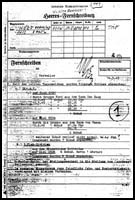 In
the days prior to February 2, firing sites were reported to be located
in the garden of Zorgvliet and in the garden of Stedelijk Museum
(town museum). The Stedelijk Museum site had just experienced an
explosion, which damaged part of the museum. After February 2, a new firing
site was set up at the corner of Statenplein / Willem de Zwijgerlaan.
At this site there was also a V2 failure and rocket pieces rained down
on the streets. One day later another rocket that was launched from Klingendael
failed and it impacted near De Battaaf. The firing site previously
at Monsterscheweg was moved to Frederick Hendrikplein (Den
Haag). In
the days prior to February 2, firing sites were reported to be located
in the garden of Zorgvliet and in the garden of Stedelijk Museum
(town museum). The Stedelijk Museum site had just experienced an
explosion, which damaged part of the museum. After February 2, a new firing
site was set up at the corner of Statenplein / Willem de Zwijgerlaan.
At this site there was also a V2 failure and rocket pieces rained down
on the streets. One day later another rocket that was launched from Klingendael
failed and it impacted near De Battaaf. The firing site previously
at Monsterscheweg was moved to Frederick Hendrikplein (Den
Haag).
In the months
of January and February the number of launches substantial increased. Because
of the the improved transportation of missiles from the Mittelwerke and
also, more missiles became available from the Blizna testing ground, Heidelager,
because of the Russian advances in Poland. The weather improved in January,
which helped to increase the number of firings because the soil became
firmer allowing better missile handling on the previously wet ground. On
February 4, a total of 16 V2s were fired in just 24 hours.
On February
13, several A4 firing sites were situated close to the grandstands of the
racetrack at Duindigt, straight across Wittenburgerweg on
the track, and also behind a house at Buurtweg. The Germans used
this site many times from November to February. The firm sandy soil of
Duindigt
provided a good base for the firing table and there were many launch sites
located on these grounds. The greatest V2 activity was in mid-February.
Inside of one week over seventy V2s were fired at London, with as many
as 50% of them hitting greater London.
The
Duindigt launching sites - photos from wartime and today |
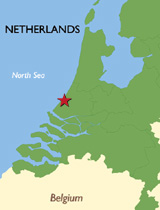 Den
Haag (The Hague) - Wassenaar - Hoek van Holland_______________________Locations
Map
Den
Haag (The Hague) - Wassenaar - Hoek van Holland_______________________Locations
Map






 From
their homes in Den Haag, residents saw quite a few V2s blast skyward. Watching
the tall missiles roar off their firing tables was an awe-inspiring experience
for onlookers. But to the launching unit technicians and engineers, preparing
a V2 for firing meant hard work and tense nerves. The V2 was such a sophisticated
weapon that even the smallest error might cause it to malfunction and crash,
or blow up on the ground. Many of the firings took place in the many restricted
areas called “The Sperrgebiet”. One of these was a three-kilometer
strip of land along the coast where all residents had were forced to exit
earlier because of construction undertaken for Hitler's Atlantik
Wall.
From
their homes in Den Haag, residents saw quite a few V2s blast skyward. Watching
the tall missiles roar off their firing tables was an awe-inspiring experience
for onlookers. But to the launching unit technicians and engineers, preparing
a V2 for firing meant hard work and tense nerves. The V2 was such a sophisticated
weapon that even the smallest error might cause it to malfunction and crash,
or blow up on the ground. Many of the firings took place in the many restricted
areas called “The Sperrgebiet”. One of these was a three-kilometer
strip of land along the coast where all residents had were forced to exit
earlier because of construction undertaken for Hitler's Atlantik
Wall.
 A
tree-lined street, such as the Rijksstraatweg / Benoordenhoutseweg,
which runs north from Den Haag through Wassenaar, was the ideal launching
site. It was firm and level, accessible to all launch vehicles, and the
tall trees provided natural camouflage for the 46-foot high rockets. The
A
tree-lined street, such as the Rijksstraatweg / Benoordenhoutseweg,
which runs north from Den Haag through Wassenaar, was the ideal launching
site. It was firm and level, accessible to all launch vehicles, and the
tall trees provided natural camouflage for the 46-foot high rockets. The


